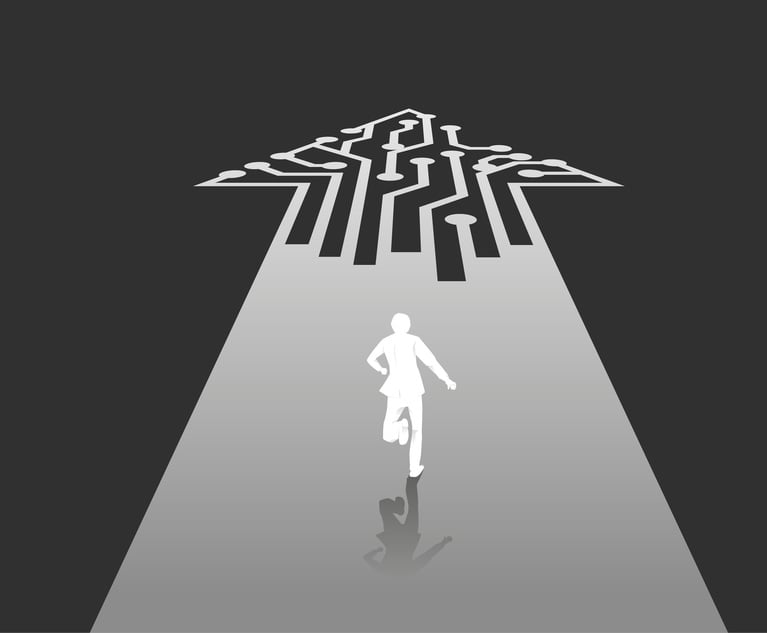BOSTON — A revolution in paper check processing that began with the ACH explosion first fueled by direct deposit of Social Security checks in the early 1990s has combined with Check 21 to create a whole new marketplace.
In a new report from the Boston-based Aite Group, analyst Nancy Atkinson says eventually all financial institutions will need to adopt either ACH conversion or check Check 21 truncation, and probably both.
She also says that if the adoption of available technology is maximized, more than 12 billion paper checks will be removed from the ACH system and that check processing spending will decrease from $1.5 billion in 2004 to $400 million by 2012.
Recommended For You
"Paper checks have a stronghold in the United States that does not exist anywhere else in the world. For many years, paper check processing in the U.S. banking industry was automated to a point where the economic benefit of eliminating checks as a payment mechanism had been relatively insignificant," Atkinson says in her new report discussing the "disappearing check."
A big change, of course, has been Check 21 adding check truncation as an option to ACH. That's in addition to a decline in paper checks volumes that began around 2003 through retail purchasing with debit cards and over the Internet. A kind of hybrid system has emerged.
"The check processing industry is in a state of rapid transformation as changes in the regulatory environment, supported by new technologies, take hold to remove paper checks from the clearance and settlement cycle, while still allowing checks to be written as desired by payers," Atkinson says in her report, based on her analysis of publicly available information and interviewing financial institutions and vendors.
One result of that is that the gap between the number of checks being written and those actually being cleared as paper checks is widening rapidly. Aite Group predicts, for instance, that by 2012, only 25% of paper checks being written will be cleared as paper.
And at that point, the think firm says, nearly all credit unions, banks and thrifts will be able to exchange check images. Remote deposit capture also will be ubiquitous. By 2011, all medium-to-large financial institutions and 80% of small ones will be able to offer that service to consumers and businesses, the Aite Group report predicts.
A major area of check writing that will continue to be on paper is in the business world.
"Although the number of checks being written by consumers is declining, there is little change in the number of checks being written and cleared for business-to-business (B2B) payments," Atkinson says.
Her report projects that large businesses will reduce their use of paper checks to 60% of their total B2B payments by 2010, from 70% last year, and that by 2010 fully 80% of B2B payments will be by paper check, down only five percentage points from 2006.
And in the small business arena, 90% of the players will still be using paper checks in 2010, also down only five percentage points from 2006.
Despite that, Atkinson projects a dramatic drop in the number of check processing centers operated by the Federal Reserve across the country, from 45 in 2002 to 21 this year to a projected seven by the end of 2011.
The Aite Group report also looks at the choice financial institutions must make between check truncation (Check 21) and ACH conversion.
"Check image exchange creates an entirely new network. Check truncation is growing rapidly, and financial institutions need to seriously consider their time of entry. There is no doubt that all financial institutions will eventually need to migrate to ACH conversion or check truncation," Atkinson says, adding that the choice most likely will be to use both.
She adds, "Early adopters typically pay an additional cost in technological and operational challenges as new processes are constructed, and many financial institutions opt not to take this path." But if a financial institution waits too long, she notes, "it loses the benefits of the new technologies and bears increased operating costs relative to its competition."
Meanwhile, Atkinson observes that nearly every financial institution in the United States has access to the ACH, "making check conversion an easier path to take. Still, ACH conversion has its challenges, and there are advantages in check truncation for certain markets and business models."
As for Check 21, the Aite Group analyst says, check imaging has "matured rapidly and is positioning itself as an extremely important migration path over the next five years by supporting both consumer and business check electronification."
And as for the technology providers, she says "software vendors have done well in providing a full set of fairly mature software products that allow check truncation technologies to rapidly accelerate."
Atkinson says she expects most financial institutions to choose their provider by the end of next year, and that the focus now is shifting toward "facilitating interconnectivity between and among the various image exchange models."
After that, the differentiators for vendors will be such value-added factors as least-cost routing, remittance data capture and matching and reporting, Aite Group predicts.
"By 2012, it appears that check conversion will be a mature marketplace, and the phenomenal growth currently seen will have tapered off to a more steady state," Atkinson concludes.
"Opportunities will still exist, to be sure, and perhaps by that time, the next revolutionary, or evolutionary, step in payment technology will be on the horizon."
© Touchpoint Markets, All Rights Reserved. Request academic re-use from www.copyright.com. All other uses, submit a request to [email protected]. For more inforrmation visit Asset & Logo Licensing.






